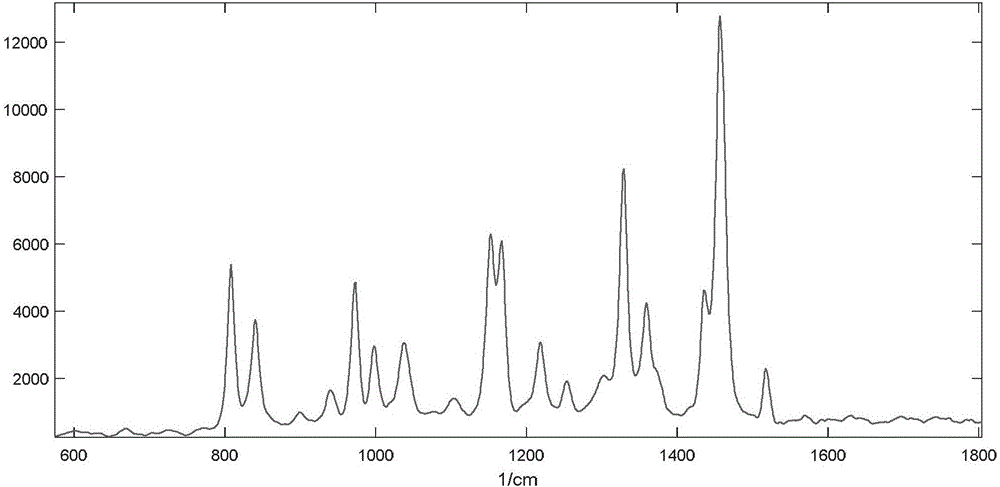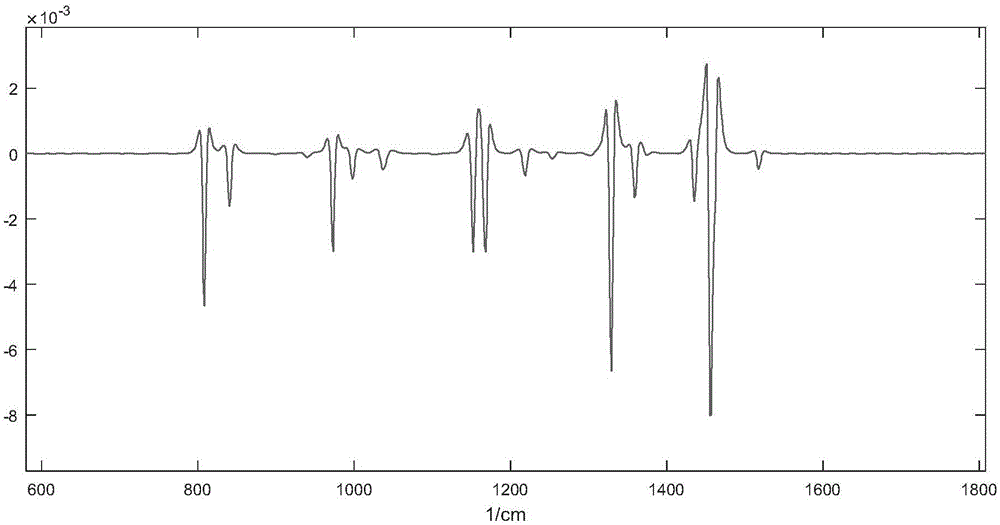Raman spectrum based substance qualitative detection method
A Raman spectroscopy and qualitative detection technology, applied in Raman scattering, special data processing applications, instruments, etc., can solve the problems of unpredictable sample conditions, large error of characteristic peak ratio, breakthrough threshold, etc., to eliminate fluorescence and other interferences Effects of factors, reduction of characteristic peak width, and effect of improving efficiency
- Summary
- Abstract
- Description
- Claims
- Application Information
AI Technical Summary
Problems solved by technology
Method used
Image
Examples
Embodiment 1
[0050] A qualitative detection method based on Raman spectroscopy for the qualitative detection of polypropylene (PP) lunch box materials, which are usually filled with CaCO 3 or Na 2 CO 3 PP material, the representative spectrum is 600-1800cm -1 scope. The method includes the following steps:
[0051] S1. Establish Raman normalized second-order spectral library of standard products:
[0052] Specifically include the following processes:
[0053] S1-1. Use a Raman spectrometer with high resolution and high signal-to-noise ratio to collect the Raman spectrum of the PP (polypropylene) standard, figure 1 It is the collected PP (polypropylene) standard in the wave number range of 600-1800cm -1 The Raman spectrum (532nm laser excitation).
[0054] S1-2. By 1cm -1 Accuracy, for PP (polypropylene) standard products in the wave number range of 600-1800cm -1 Interpolation of Raman spectral data, in the wavenumber shift range 600-1800cm-1 corresponds to the integer wavenumber r...
PUM
 Login to View More
Login to View More Abstract
Description
Claims
Application Information
 Login to View More
Login to View More - R&D
- Intellectual Property
- Life Sciences
- Materials
- Tech Scout
- Unparalleled Data Quality
- Higher Quality Content
- 60% Fewer Hallucinations
Browse by: Latest US Patents, China's latest patents, Technical Efficacy Thesaurus, Application Domain, Technology Topic, Popular Technical Reports.
© 2025 PatSnap. All rights reserved.Legal|Privacy policy|Modern Slavery Act Transparency Statement|Sitemap|About US| Contact US: help@patsnap.com



